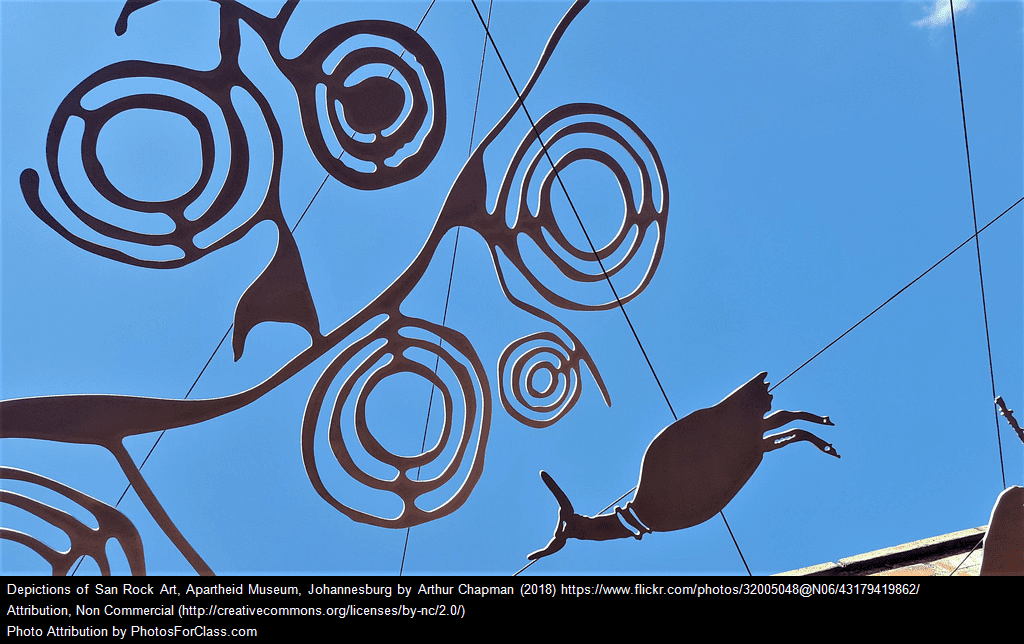Our Johannesburg co-design workshop: top 10 highlights
Last month we held our third international co-design workshop, this time co-hosting with Amnesty International, in Johannesburg. We had 45 participants from more than 25 different countries, and our focus was on making the Human Rights Measurement Initiative (HRMI) even better and co-designing ways for HRMI data to be used by human rights defenders and media for real impact in improving people’s lives.
These workshops are really important for us. Collaboration is one of HRMI’s key values, and right from the very beginning, HRMI has been shaped by creative conversations with experts all over the world.
I had a wonderful time! Here are my top 10 highlights:
1. New friends
Of course a major highlight was getting to meet some fabulously inspiring and courageous human rights practitioners and making new friends.
Here’s just one of them, Mandira Sharma, Founder of Advocacy Forum, Nepal, in a brand new video interview (more about that in #10 below):
2. Shifts
The ‘Shifts’ exercise we did on Day 1 was extremely useful. We used empathy interview techniques to get insight into one another’s lived reality and then synthesised those experiences into ‘Current State’ – ‘Future State’ shifts that we are looking to achieve.
Here are snaps of a couple of them:
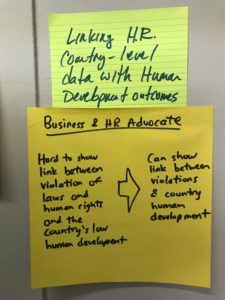
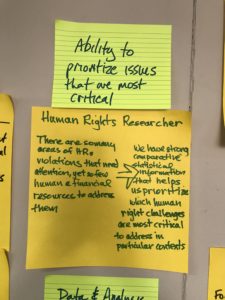
The common thread through all of these is that we are (collectively) looking to create a world where respect for human rights is front and centre of what countries, companies and individuals are seeking to achieve, using data to make evidence-based decisions.
3. Apartheid Museum
If you bring a crowd of human rights practitioners to South Africa, you won’t be surprised that they are intensely interested in the country’s history.
We didn’t have long enough on our visit to Johannesburg’s Apartheid Museum, but we got some sense of the breadth and depth of apartheid’s discrimination and disparity in distribution of resources.
We also gained some insight into the truth and reconciliation commission and people’s mixed opinions about how it contributed to reconciliation in South Africa.
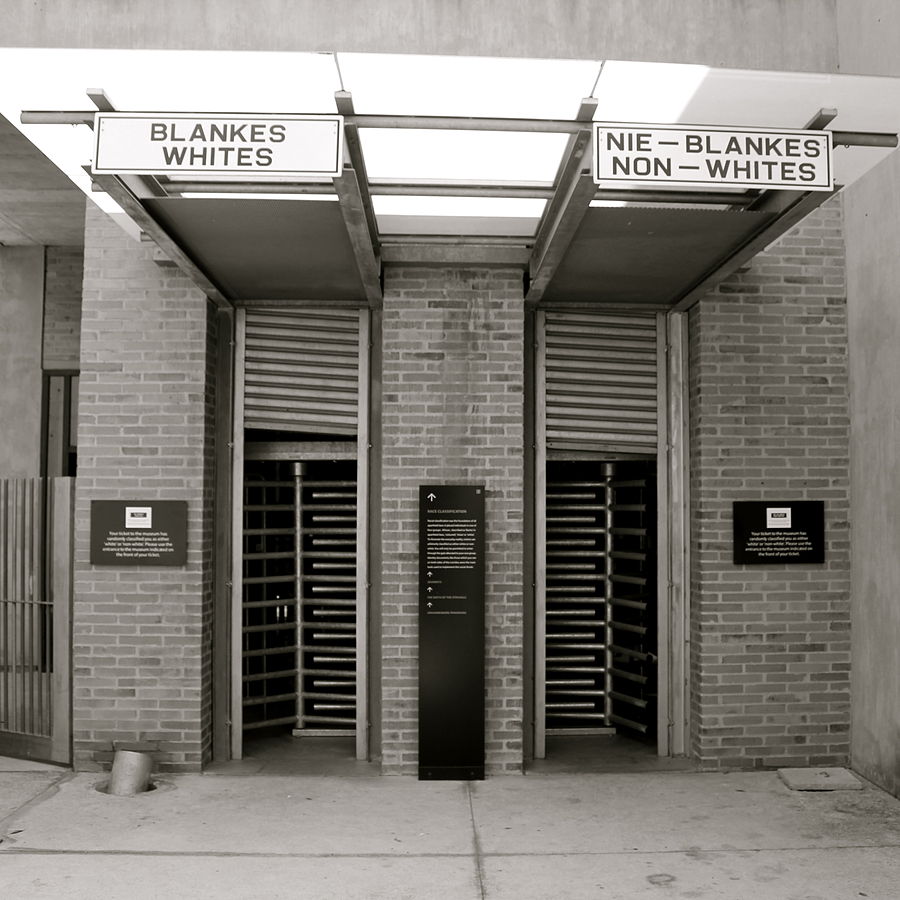
4. Improving our data presentation
On Day 2 we spent time getting feedback on aspects of our current data presentation that people find confusing or misleading, and hearing new ideas for improving it.
This was one of the most important parts of the workshop for me, so let me say this really clearly: if there’s something we are doing that doesn’t resonate or suit you – we want and need you to tell us. We look forward to sharing with you some more developed solutions for addressing these weaknesses over the coming months.
5. Sketches
I loved seeing a huge range of sketches of different ways we could present our data. Most were very specific, with lots of bar charts. But there were some wonderfully abstract ones too.
I particularly like this ‘leaf’ diagram (see below) which represents the idea that we need to find a way of illustrating that our indicators only capture a subset of all dimensions of rights.
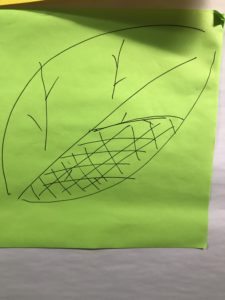
6. Brand new ideas
It was great to hear other innovative ideas for expanding what HRMI does and for making HRMI data more accessible, for example:
- An app for travellers that provides human rights information for the country you are visiting, with comparisons to relevant comparator countries.
- An interactive map showing information on country ratification of international instruments, domestic legislation, and jurisprudence (case law).
- Infographics that are downloadable with users’ own country-specific data.
- Narratives of people’s experiences to link to the data and assist with providing comparative analysis across countries.
- Expansion to cover refugees/asylum-seeker/migrant rights.
- Colour-coding of countries to illustrate comparative performance (for example, as shown on pyramid below).
Which of these strikes a chord with you? Do you have others to add? Please tell us!

7. Voting
After all the idea generation we had done on Day 2, it was fun on Day 3 to give everyone voting dots and see which ideas got the greatest support from other workshop participants.
The most popular ideas were:
- Find a simpler way to show country progress on economic and social rights.
- Add a short narrative for each country (explaining in words what our data show).
- Add the ability to search by “vulnerable group” so that users can see all the countries where, for example, LGBTQIA+ people, or refugees, or disabled people, were identified as particularly at risk of rights violations.
- Add a section on each country page for local action and information.
We are currently working on how best to take these forward, as well as many other things.
8. Ambassadors
One of the biggest challenges we faced last year when running our pilot was how to best connect to and engage with in-country human rights experts.
Workshop participants proposed we appoint someone in each country to the role of HRMI Ambassador. That person would help with tailoring HRMI communications to suit the local context, help nominate potential survey respondents, and provide personal encouragement to their contacts to participate in the survey.
Thanks so much to everyone who has already volunteered to be an Ambassador! If you are reading this and are interested in becoming an Ambassador for your country, please get in touch.
9. Country expansion discussion
We discussed the fact that we plan to expand our coverage to all countries in the world as soon as possible. For now we only have sufficient resources to add a few more countries to the 13 we are already producing civil and political rights data for.
It was really interesting to invite country nominations from participants. Since we were in South Africa, I was expecting South Africa to receive the most nominations, but instead the top nominee was the Democratic Republic of the Congo (DRC), a country suffering from widespread human rights violations combined with bad governance. Workshop participants agreed that HRMI collecting data from the DRC would be both helpful for NGOs on the ground and supported by the abundance of data already being gathered in the country.
The second most nominated country was the United State of America. We look forward to announcing the final list of expansion countries sometime over the next month or two. In the meantime we are still seeking nominations for one new country to add from the Middle East and North Africa region (preferably a relatively good performer, to provide contrast with Saudi Arabia which is already in our sample) and one new country to add from Northern Europe. If you’d like to nominate a country, please get in touch.
10. Videos
A major highlight that has continued after getting home, has been watching the video interviews we did with workshop participants.
Since I was so busy at the workshop I didn’t feel I had enough time to talk with most people (… a bit similar to how I felt at my wedding…), so this really made up for it. It was lovely to get that extra sense of insight into the important work that these amazing people do.
We have started editing and have released three short videos so far. Check them out right here! Also make sure you follow us on Twitter or Facebook so that you see each new one as we release them.
Thanks!
I’d like to extend an enormous THANK YOU to everyone who contributed to the great success of this third co-design workshop.
Thank you to Russ and his team at CoCreative who facilitated the workshop, Amnesty International and the Open Society Initiative for Southern Africa (OSISA) for their support in hosting it, and all our participants, most of whom travelled long distances to join us and share their insights.


